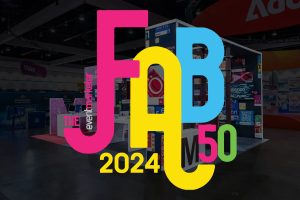Trade shows have become a way of life since the first documented expo in 1851. However, as we briefly discussed in Trade Show 101 | The Invisible Industry, face-to-face marketing can trace its roots back thousands of years. Kaye Sung Chon and Karin Weber say it best in Convention Tourism: International Research and Industry Perspectives, “the human desire to meet and exchange ideas, the basis for conventions and meetings, is as old as humankind.” With that in mind, it’s reasonable to expect conventions and expos to continue for generations to come.
Since The Great Exhibition of 1851 in London’s Crystal Palace, the industry has seen exponential growth. The multi-billion-dollar industry has evolved into a formidable marketing resource, paving the way for tens of thousands of events and thousands of dedicated conferencing venues that welcome nearly 5 million companies and more than 300 million visitors annually. In its wake, numerous professional organizations and businesses cater to the industry’s development and future growth.
In this Trade Show 101, we’ll take a closer look at some of those organizations, their roles in the trade show world and what’s being done today to move the industry forward.
Two of the leading professional associations that help advocate for the industry are the International Association of Exhibitions and Events® (IAEE) and The Experiential Designers and Producers Association (EDPA).
IAEE first began in 1928 as the National Association of Exposition Managers. Since then, it’s grown to represent more than 12,000 individuals and organizations in more than 50 countries. According to IAEE, their membership is split evenly between those directly involved in the planning and management of trade shows and those who provide products and services to the industry.
Additionally, IAEE manages The Center for Exhibition Industry Research (CEIR) which according to their website, “houses the world’s largest collection of primary, exhibition-related research studies.” This research is available to members.
Since 1954, EDPA has grown to become a leading advocate for designers and producers. These member organizations represent a wide range of suppliers and vendors specifically dedicated to the industry. In recent years, EDPA has expanded to “help organizations create effective face-to face customer experiences & environments for tradeshows, events, corporate environments, museums, retailers, education and entertainment.” EDPA’s membership represents more than 300 companies across 18 countries and counting.
Beyond these professional organizations, dozens of other global associations have been created to help advocate for groups in nearly every region of the world.
In addition to these collaborative organizations, several publications, podcasts and forums have also been created to help expand industry knowledge. Exhibitor Magazine, Trade Show News Network, Event Marketer, Trade Show Executive, Global Exhibitor and more have come together to share industry insights. Together, these outlets reach thousands of professionals worldwide.
Despite being known as “The Invisible Industry,” it’s obvious that the trade show world is anything of the sorts. From face-to-face marketing’s humble origins thousands of years ago to the first 1851 show to today’s glitz and glamour, trade shows have grown tremendously and continue an upward trajectory. With the help of industry organizations, professional publications and trustworthy exhibit houses, the future of trade shows is bright.
If you’re new to the industry and still in need of help, check out the other blogs in our Trade Show 101 series or reach out to us! We’re always ready to help you with your next project!











